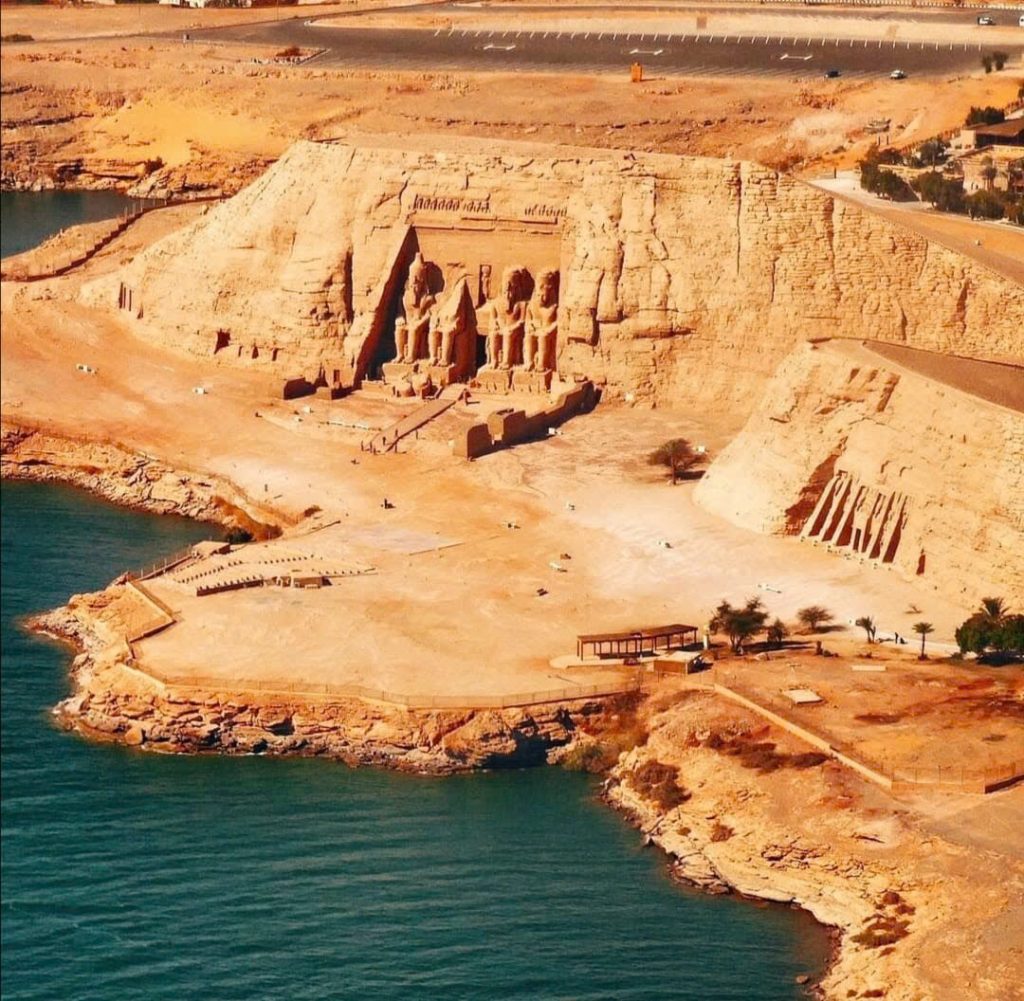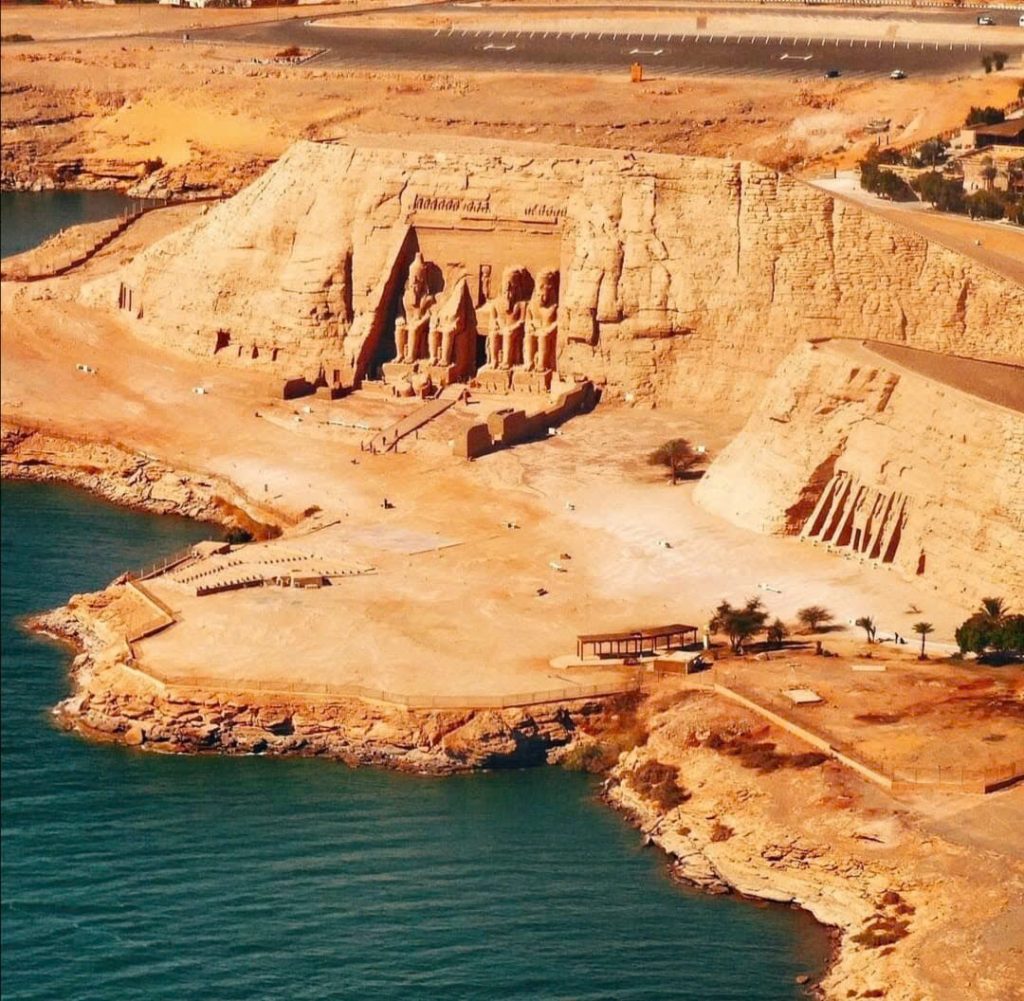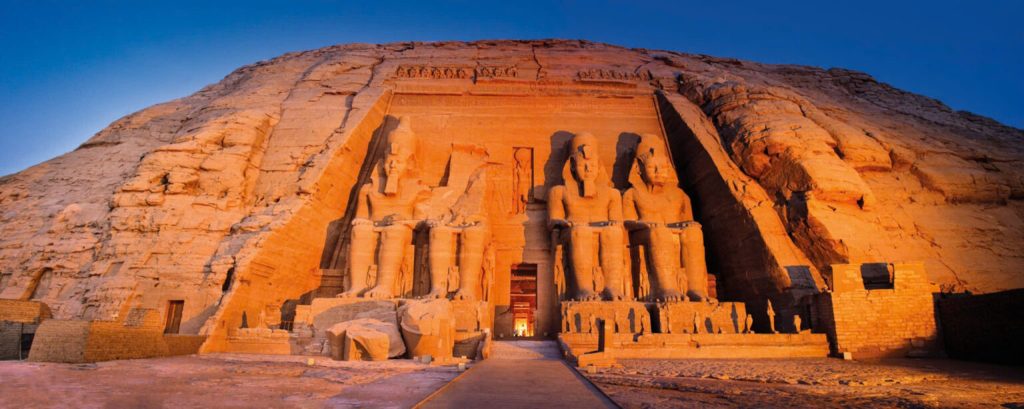Standing proudly along the banks of the majestic Nile River, the Great Temple of Abu Simbel continues to captivate the world as one of Egypt’s most extraordinary archaeological treasures. This monumental structure, commissioned by the legendary Pharaoh Ramses II in the 13th century BCE, tells a story of unparalleled power, devotion, and architectural genius. Its timeless allure draws visitors from across the globe to marvel at its grandeur and the fascinating legacy it represents.
The Architectural Wonder That Defies Time
Carved directly into the golden sandstone cliffs of southern Egypt, the Great Temple of Abu Simbel commands attention with its awe-inspiring facade. Four colossal statues of Ramses II dominate the entrance, each soaring an impressive 20 meters (66 feet) high. These statues, majestic and imposing, were designed to leave an indelible impression on anyone who beheld them. They not only commemorate the pharaoh’s reign but also serve as an enduring symbol of his divine authority and unparalleled achievements. Surrounding these statues are intricate carvings and hieroglyphics that narrate tales of Ramses II’s military conquests and his divine connections to the gods. This facade, a masterpiece of ancient Egyptian artistry, remains a visual chronicle of a civilization’s strength and ingenuity.

Adding to the wonder of Abu Simbel is its smaller yet equally significant counterpart—the Temple of Queen Nefertari. Dedicated to Ramses II’s beloved wife and the goddess Hathor, this adjoining structure is a testament to the pharaoh’s deep affection for his queen. The statues of Nefertari are depicted alongside Ramses II’s, an exceptional representation of a queen being honored almost equally with her king. This rare architectural feature underscores the importance of their union and the elevated status of Nefertari, making it a remarkable tribute to love and devotion in ancient Egyptian society.
Where Engineering Meets Divine Precision
One of the most extraordinary aspects of the Great Temple of Abu Simbel is its alignment with celestial events, showcasing the ancient Egyptians’ profound understanding of both architecture and astronomy. Twice a year, on February 22 and October 22, the temple becomes the stage for a breathtaking solar phenomenon. The rays of the rising sun penetrate the temple’s inner sanctum, illuminating the statues of Ramses II and the gods seated beside him. This alignment is no accident; it is a calculated masterpiece, designed to highlight the pharaoh’s connection to the divine. These dates, believed to coincide with Ramses II’s coronation and birth, transform the temple into a celestial observatory, reflecting the ancient Egyptians’ exceptional ingenuity and their reverence for the natural world.
Abu Simbel’s enduring legacy faced a dire challenge in the 1960s when the construction of the Aswan High Dam threatened to submerge the temple complex beneath the rising waters of Lake Nasser. In response to this looming crisis, an international rescue effort led by UNESCO was launched to preserve this invaluable piece of cultural heritage. The operation was nothing short of a modern engineering miracle. Over the course of four years, the entire temple complex was meticulously dismantled, with each of its massive blocks weighing up to 30 tons, and relocated to higher ground. This painstaking process ensured that future generations would continue to marvel at this ancient wonder. The success of this monumental endeavor stands as a testament to global cooperation and humanity’s shared commitment to preserving our cultural treasures.

Today, the Great Temple of Abu Simbel endures as more than just a relic of ancient times. It serves as a powerful symbol of Ramses II’s unparalleled legacy and the extraordinary achievements of the ancient Egyptian civilization. From its original construction to its modern-day preservation, the temple embodies the heights of human creativity and the enduring importance of safeguarding our shared history. Visitors to this magnificent site are not merely observers of an ancient monument; they are participants in a timeless narrative that celebrates the human spirit’s capacity to create, endure, and inspire.

Abu Simbel continues to stand as a beacon of human achievement and resilience. Its towering statues, celestial alignments, and the intricate artistry etched into its walls remind us of the grandeur of ancient Egypt and its remarkable contributions to world heritage. Each element of the temple—from its awe-inspiring facade to the love and devotion embodied in the Temple of Queen Nefertari—speaks to a civilization that valued artistry, precision, and the celebration of life’s enduring mysteries. As visitors stand before this majestic wonder, they are reminded of the timeless connection between humanity’s past, present, and future. The Great Temple of Abu Simbel is not merely a monument to a pharaoh; it is a testament to the extraordinary potential of human creativity and collaboration across the ages.





